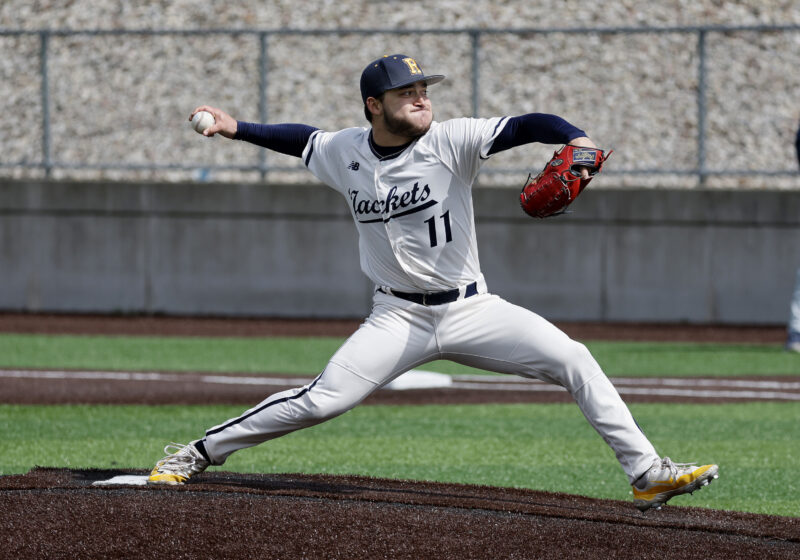 Marking the Saturday before reading period and finals, Dandelion Day — more widely known as D-Day — represents a faux-holiday for the student population and an opportunity to unwind from the stresses of the semester while partying freely with their peers. Activities in recent years have included headliner bands such as OK Go and Eve 6, as well as visiting food stands, carnival attractions and, more unofficially, getting to pet the horses ridden by the Rochester Police Department.
Marking the Saturday before reading period and finals, Dandelion Day — more widely known as D-Day — represents a faux-holiday for the student population and an opportunity to unwind from the stresses of the semester while partying freely with their peers. Activities in recent years have included headliner bands such as OK Go and Eve 6, as well as visiting food stands, carnival attractions and, more unofficially, getting to pet the horses ridden by the Rochester Police Department.
However, at its inception on Wednesday, May 16, 1951, D-Day was a structured day of events created for the student body as a combination of the five-most prevalent and established spring activities at UR at the time — an awards assembly, the fulldress reserve of the Navy Reserve Officer Training Corps (NROTC), the tradition of a “Freshmen vs. Sophomore” tug-of-war game, the final baseball game of the season and the Dandelion Dinner (which is the origin of the name “Dandelion Day”). Throughout the following years, D-Day continued the longstanding spring tradition of providing the student body with a day of fun filled activities and events geared towards relaxing the stressed out population — which has evolved, of course, to a day primarily dedicated to campuswide heavy alcohol use. This transition from the former event-heavy, structured D-Day to the free-for-all drinking extravaganza of the present day leads one to wonder what catalyzed for the shift, rather than simply offering the speculations that college-age students just like to get drunk with their crazy face on.
Examining articles from the Campus Times archives and statistics regarding D-Day from 2000 through 2010, the change seems to manifest itself through the activities offered on D-Day itself, as well as general attendance to said events. Former Campus Times pages announced various schedules of D-Day events — one example being from D-Day 2004, where a schedule provided events from 10 a.m. until 7 p.m., some of which included free bagels in the Hillside Lounge, student performances in front of Wilson Commons, karaoke outside of Burton Hall, a catered barbeque lunch, a game of tug-of- war, a double dutch competition and live music by two or more bands. In addition, the D-Day of 2005 featured a Ferris wheel in addition to a class council sponsored Tie-Dye event, more tug-of-war/live music and karoke. Most interestingly, 2005 offered a Campus Activities
Board sponsored beer garden for 21-and-over students, with a description of the “rules” for D-Day in a full-page advertisement. Much the same trends exist between 2000 and 2006, where D-Day seemed to be largely a day for campus-wide entertainment and fun supplemented by alcohol — not simply a day to get trashed into oblivion.
From 2005 onwards — specifically in 2006 — however, Dandelion Day adopted notable changes in its structure, which has since been described in terms of widespread dangerous and heavy drinking that results in the endangerment of large numbers of students. It seemed that D-Day began to match the severity of its own nickname, and the various administrative stances that followed were ill-received in the opinion of the student population, particularly with respect to the reduced funding of campus events, the cancellation of campus group-sponsored performances and activities and the increasing of security around campus. The “D-Day Impact Report” from the UR Medical Emergency Response Team claimed that, in 2008, a total of 12 calls were made, nine of which were for alcohol and three of which were attributed to trauma.
The same report in 2006, however, showed that MERT responded to 21 calls in the field, in addition to receiving 26 calls for medical assistance. In response to the concerns over student safety and behavior, funding for D-Day was dramatically decreased in 2007, UR security was highly increased around campus and student performances that had previously been the norm were cancelled.
D-Day has since become, it seems, most concerned with two factors — what the band is, and most predominantly, drinking … a lot. While the day offers some delicious food from vendors that cater to the “drunk-food” demographic, it appears that an effort to lessen the drinking culture has in fact placed the most emphasis on it. Indeed, in 2008 and 2009, there was a definite trend toward reduced student harm — but, understandably and unfortunately, the statistic of “how much harm can students do to themselves” is entirely ruled by the natural entropy of college life.
The measures provided for prevention and treatment of potential problems — such as the increased security, the MERT tent set up on location for injured or inebriated students, etc. — are fantastic. As a whole, however, Dandelion Day has been notably less about celebrating the end of classes with the campus community and has become more about examining the bottom of the bottle.
Cicoria is a member of
the class of 2012.
Ford is a member of
the class of 2013.
